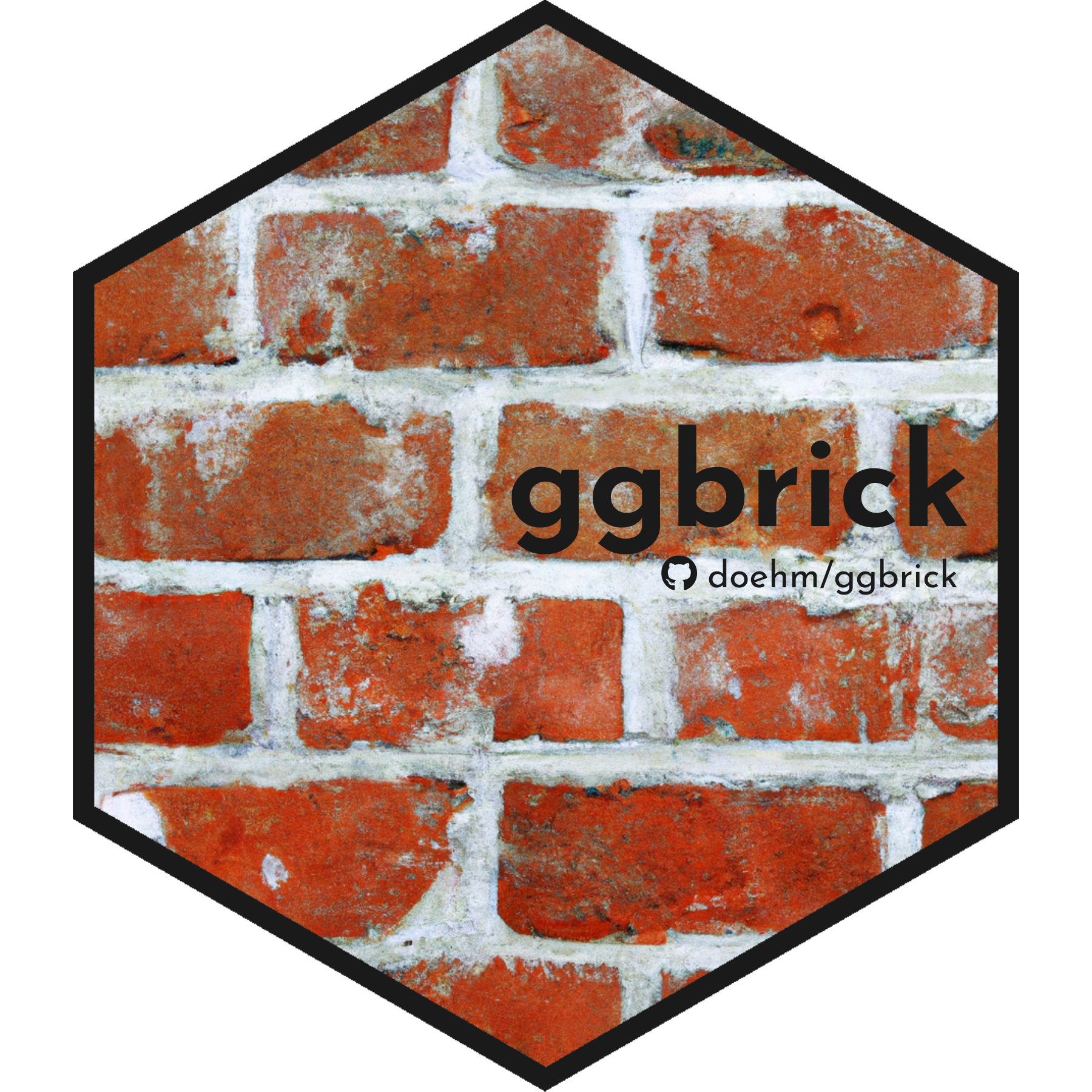If you’re looking for something a little different, ggbrick creates a
‘waffle’ style chart with the aesthetic of a brick wall. The usage is
similar to geom_col where you supply counts as the height of the bar
and a fill for a stacked bar. Each whole brick represents 1 unit. Two
half bricks equal one whole brick.
Install from CRAN
install.packages("ggbrick")or from Git
devtools::install_github("doehm/ggbrick")There are two main geoms included:
geom_brick(): To make the brick wall-style waffle chart.geom_waffle(): To make a regular-style waffle chart.
Use geom_brick() the same way you would use geom_col().
library(dplyr)
library(ggplot2)
library(ggbrick)
# basic usage
mpg |>
count(class, drv) |>
ggplot() +
geom_brick(aes(class, n, fill = drv)) +
coord_brick()coord_brick() is included to maintain the aspect ratio of the bricks.
It is similar to coord_fixed(), in fact, it is just a wrapper for
coord_fixed() with a parameterised aspect ratio based on the number of
bricks. The default number of bricks is 4. To change the width of the
line outlining the brick use the linewidth parameter as normal.
To change specify the bricks_per_layer parameter in the geom and coord
functions.
mpg |>
count(class, drv) |>
ggplot() +
geom_brick(aes(class, n, fill = drv), bricks_per_layer = 6) +
coord_brick(6)You can change the width of the columns similar to geom_col() to add
more space between the bars. To maintain the aspect ratio you also need
to set the width in coord_brick().
mpg |>
count(class, drv) |>
ggplot() +
geom_brick(aes(class, n, fill = drv), width = 0.5) +
coord_brick(width = 0.5)To get more space between each brick use the gap parameter.
mpg |>
count(class, drv) |>
ggplot() +
geom_brick(aes(class, n, fill = drv), gap = 0.04) +
coord_brick()For no gap set gap = 0 or use the shorthand geom_brick0().
mpg |>
count(class, drv) |>
ggplot() +
geom_brick0(aes(class, n, fill = drv)) +
coord_brick()For fun, I’ve included a parameter to randomise the fill of the bricks or add a small amount of variation at the join between two groups. The proportions are maintained and designed to just give a different visual.
mpg |>
count(class, drv) |>
ggplot() +
geom_brick(aes(class, n, fill = drv), type = "soft_random") +
coord_brick()mpg |>
count(class, drv) |>
ggplot() +
geom_brick(aes(class, n, fill = drv), type = "random") +
coord_brick()geom_waffle() has the same functionality as geom_brick() but the
bricks are square giving a standard waffle chart. I added this so you
can make a normal waffle chart in the same way you would use
geom_col(). It requires coord_waffle(). To maintain the aspect
ratio.
mpg |>
count(class, drv) |>
ggplot() +
geom_waffle(aes(class, n, fill = drv)) +
coord_waffle()mpg |>
count(class, drv) |>
ggplot() +
geom_waffle0(aes(class, n, fill = drv), bricks_per_layer = 6) +
coord_waffle(6)You may want to flip the coords when using geom_waffle(). To do so
you’ll need to use coord_flip() and theme(aspect.ratio = <number>).
mpg |>
count(class, drv) |>
ggplot() +
geom_waffle0(aes(class, n, fill = drv)) +
coord_flip() +
theme(aspect.ratio = 1.8)









